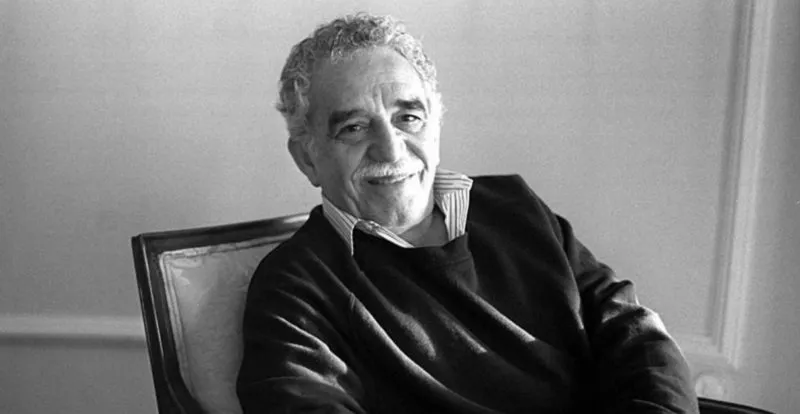
Una de las películas más destacadas del director
After seeing my first Andrei Tarkovsky film last week, the idea came to me to see more stories from another director of the time and one of my favorites: the Swedish Igmar Bergman. I have seen and enjoyed Summer with Monika, Wild strawberries, The seventh seal, Through a glass darkly, but Bergman's filmography is so extensive that there are dozens of titles more that I haven't seen.
Después de haber visto la semana pasada mi primera película de Andrei Tarkovsky, me vino la idea de ver más historias de otro director de la época y uno de mis favoritos: el sueco Igmar Bergman. He visto y disfrutado Summer with Monika, Wild strawberries, The seventh seal, Through a glass darkly, pero la filmografía de Bergman es tan extensa que hay decenas de títulos más que no he visto.
Hour of the wolf, Autumm sonata, Fanny & Alexander, they all caught my attention, but for some reason I decided to watch Persona, without knowing exactly what it was about. The 1966 film tells the story of Elisabeth (Liv Ullmann), a famous stage actress who is hospitalized after having fallen into complete silence after a performance of "Electra." After being subjected to a series of tests, the diagnosis seems to be good because Elisabeth is physically and psychologically perfectly (that is what her doctor says). However, she maintains absolute silence and then the doctor entrusts her to Alma (Bibi Andersson), a young nurse.
Hour of the wolf, Autumm sonata, Fanny & Alexander, todas llamaban mi atención, pero por alguna razón decidí ver Persona, sin saber exactamente de que trataba. La película de de 1966 y cuenta la historia de Elisabeth (Liv Ullmann), una célebre actriz de teatro que es hospitalizada tras haber caído en un absoluto mutismo después de una representación de "Electra". Tras ser sometida a una serie de pruebas, el diagnóstico parece ser bueno porque Elisabeth se encuentra perfectamente física y psicologicamente (eso dice su doctora). Sin embargo, mantiene absoluto silencio y entonces la doctora se la encomienda a Alma (Bibi Andersson), una joven enfermera.
After a while and to help her in her recovery, the doctor sends Elisabeth with Alma to a house on the beach and that's where the real story begins. Until that moment we have seen the hospital, the diagnosis, the care and the way Alma talks non-stop, trying to get Elisabeth to say something, but as soon as they reach the beach the film becomes more and more cryptic, linking a series of themes and stories in a way that even today, more than fifty years later, is still a matter of study and analysis.
Después de un tiempo y para ayudarla en su recuperación, el médico envía a Elisabeth con Alma a una casa en la playa y ahí es donde comienza la verdadera historia. Hasta ese momento hemos visto el hospital, el diagnóstico, los cuidados y la forma en que Alma habla sin parar, intentando que Elisabeth diga algo, pero en cuanto llegan a la playa la película se vuelve cada vez más críptica, enlazando una serie. de temas e historias de una manera que aún hoy, más de cincuenta años después, sigue siendo materia de estudio y análisis.
To be fair Bergman had already anticipated some of this when he showed us in the prologue a series of symbolic images: a tarantula, a lamb being slaughtered, the hand of a man being crucified, a phallus appearing for an instant (like in Fight club), a play that seems to represent the devil or death, a movie projector and a morgue in which a boy with glasses wakes up to read A hero of our time by Mikhail Lemontov and approaches what appears to be a screen with the blurred image of a face: Elisabeth's. What do these images represent? I don't know exactly. There are clear religious symbols and allusions to death, but who's the child? Is it all about someone's mind? From Elisabeth's? Is it a more general message? When we later see Alma with Elisabeth in the hospital we think that the prologue meant something, but that the movie will be normal; however, as soon as they get to the beach, we realize that nothing in the movie is normal.
Siendo justos, ya Bergman nos había anticipado algo de esto cuando nos mostró en el prólogo una serie de imágenes simbólicas: una tarántula, un cordero siendo degollado, la mano de un hombre que está siendo crucificado, un falo que aparece durante un instante (como en Fight club), una obra que parece representar al demonio o la muerte, un proyector de cine y una morgue en la que un niño con anteojos se despierta para leer Un héroe de nuestro tiempo de Mijaíl Lemontov y se acerca a lo que parece ser una pantalla con la imagen borrosa de un rostro: el de Elisabeth. ¿Qué representan estas imágenes? No lo sé exactamente. Hay claros símbolos religiosos y alusiones a la muerte, pero ¿quién es el niño? ¿todo se trata de la mente de alguien? ¿de Elisabeth? ¿es un mensaje más general? Cuando luego vemos a Alma con Elisabeth en el hospital pensamos que el prólogo quiso decir algo, pero que la película será normal; sin embargo, en cuanto llegan a la playa, nos damos cuenta de que nada en la película es normal.
With incredible direction and exquisite black-and-white photography that abounds with close-ups of the two women's faces, Bergman describes and recounts what turns out to be a psychological thriller and a cinematic gem. It breaks the fourth wall in some moments, shows scenes in which it is not clear if they are symbolic, if they are dreams or if they are really happening (Eisabeth visiting Alma's room at night, for example). It deals with philosophical, religious, personal issues, talks about sexuality, eroticism, life, death, destiny, abortion, motherhood, there is a quite lesbian scene that seems to suggest a romantic relationship between Alma and Elisabeth, but later It migrates to a more love-hate relationship when Alma discovers what is truly going on.
Con una dirección increíble y una fotografía exquisita en blanco y negro en la que abundan los primeros planos de los rostros de las dos mujeres, Bergman describe y cuenta lo que resulta ser un thriller psicológico y una joya cinematográfica. Rompe la cuarta pared en algunos momentos, muestra escenas en las que no queda claro si son simbólicas, si son sueños o si realmente están ocurriendo (Eisabeth visitando la habitación de Alma durante la noche, por ejemplo). Trata temas filosóficos, religiosos, personales, habla de la sexualidad, el erotismo, la vida, la muerte, el destino, el aborto, la maternidad, hay una escena bastante lésbica que parece sugerir una relación romántica entre Alma y Elisabeth, pero que luego migra a una relación más de amor-odio cuando Alma descubre lo que verdaderamente está pasando.
Then, little by little, we can see how Alma begins to look more and more like Elisabeth, until that similarity crystallizes in a monologue by the nurse that is first shown to us with the close-up of Elisabeth and Alma's voiceover (a resource that abounds in the film) and then we are shown, the same dialogue, with Alma in the foreground delivering what seems to be the central monologue of the film. At the end of this sequence, one of the most shocking scenes of the story is shown and the one that seems to contain the key to everything we have seen: a close-up fuses half of Elisabeth's face with half of Alma's face. Hthey confused? Is there an impersonation? Or are they both the same person? Is this duplicity a way to show the divided mind of the character?
Luego, poco a poco, podemos ver cómo Alma comienza a parecerse más y más a Elisabeth, hasta que esa similitud se cristaliza en un monólogo de la enfermera que primero se nos muestra con el primer plano de Elisabeth y la voz en off de Alma (un recurso que abunda en la película) y luego se nos muestra, el mismo diálogo, con Alma en primer plano pronunciando lo que parece ser el monólogo central de la película. Al final de esta secuencia se muestra una de las escenas más impactantes de la historia y la que parece contener la clave de todo lo que hemos visto: un primer plano fusiona la mitad del rostro de Elisabeth con la mitad del rostro de Alma, ¿se han confundido? ¿hay una suplantación? ¿o ambas son la misma persona? ¿esta duplicidad es una forma de mostrar la mente dividida del personaje?
I would like to say that in the end everything clears up, but the truth is that it doesn't. On the contrary, perhaps it seems more and more cryptic because when scenes and dialogues are reviewed, everything seems to make sense; that is, one idea can be valid and the opposite idea too. On the other hand, the film abounds with allusions to the imposture, to the illusory; Elisabeth is an actress and Persona in Latin (because the title is in Latin and not in Spanish) means Mask. Since the nurse's name is Alma, do the two women represent opposite sides of a conflicting personality? Does the actress suffer from schizophrenia? Or are they both the creation of another mind? The boy's, perhaps (by the way, very similar to Alma when she wears her eyes)? I don't know. They all seem to be valid options.
Quisiera decir que al final todo se aclara, pero la verdad es que no. Al contrario, acaso parece cada vez más y más críptica porque cuando se repasan escenas y diálogos, todo parece tener sentido; es decir, una idea puede ser válida y la idea opuesta también. Por otro lado, en la película abundan las alusiones a la impostura, a lo ilusorio; Elisabeth es una actriz y Persona en latín (porque el título está en latín y no en español) quiere decir Máscara. Siendo que la enfermera se llama Alma, ¿las dos mujeres representan lados opuestos de una personalidad en conflicto? ¿la actriz padece esquizofrenia? ¿o ambas son la creación de otra mente? ¿la del niño, tal vez (por cierto muy parecido a Alma cuando ella usa aneteojos)? No lo sé. Todas parecen ser opciones válidas.
I have seen many films and I don't remember any one of which so many things can be analyzed (I have left a lot out of this post) or that has so many possible interpretations like this one. In addition, the script, the direction, the photography, the handling of lights and shadows, the soundtrack, everything is perfect and helps to generate that climate of tension, of mystery, in which we know that something's being told to us even if we don't understand exactly what it is. Knowing that as a work like this is reviewed, its evaluation can be enriched, I think that Persona is a movie to see and analyze several times, have any of you seen it? I read you in the comments.
He visto muchísimas películas y no recuerdo niguna de la que se puedan analizar tantas cosas (he dejado un montón por fuera de este post) o que tenga tantas posibles interpretaciones como esta. Además, el guión, la dirección, la fotografía, el manejo de luces y sombras, la banda sonora, todo es perfecto y ayuda a generar ese clima de tensión, de misterio, en el que sabemos que se nos está contando algo aunque no entendamos exactamente el qué. Sabiendo que a medida que se repasa una obra como esta se puede enriquecer su valoración, creo que Persona es una película para ver y analizar varias veces, ¿alguno de ustedes la ha visto? Los leo en los comentarios.







